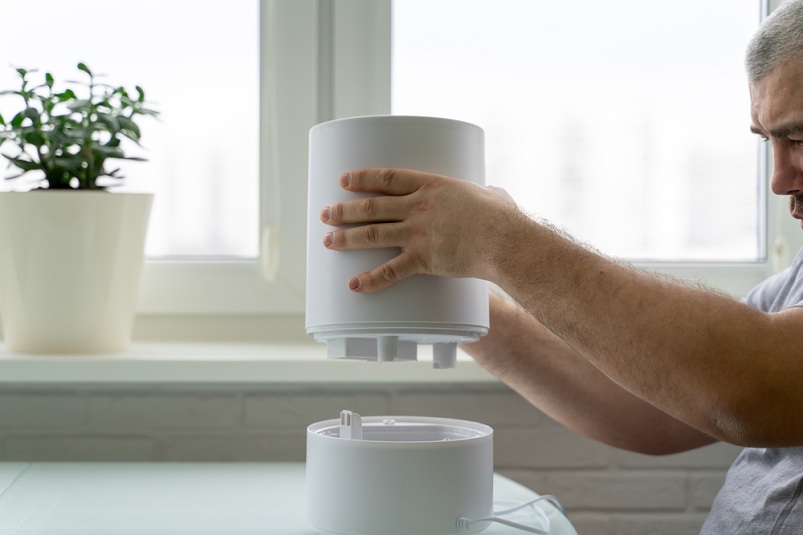Energy efficiency is a huge topic these days, and rightly so.
It has become increasingly important for both environmental and money-saving purposes.
To help consumers understand this, the United States, United Kingdom, and other countries have developed country-specific efficiency ratings (EERs) for most major electric equipment, including portable air conditioners.
This guide will teach you about the US standard rating systems and how to use them when buying a portable air conditioner in the US.
NOTE: If you’re still looking for a portable air conditioner for your home, look at our updated list of the top portable air conditioners currently available.
What Is EER?
The Energy Efficiency Rating (EER) is one way to measure the efficiency of your heating and cooling system. It’s determined by multiplying British thermal units (BTUs), the amount of heat needed to raise the temperature of one pound of water by one degree Fahrenheit, by the watts used by the equipment.
For example, a 12,500-BTU furnace that consumes 3,000 watts has an EER of 11.5 (12,500 x 3,000 37,500; 37,500 ÷ 300 11.5).
This calculation is based on operating the equipment with an outside temperature of 90 degrees Fahrenheit. A higher EER indicates greater energy efficiency.
Portable Air Conditioners & EER
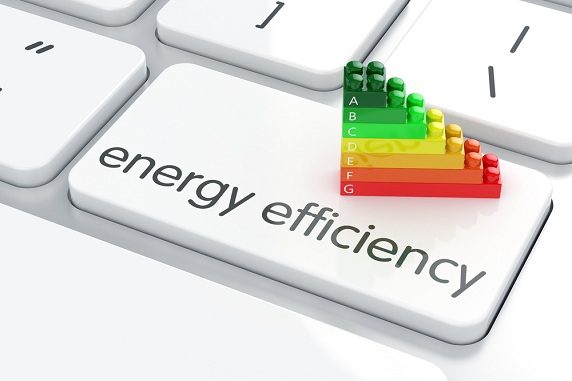
Portable air conditioners can be found online and in stores with an energy efficiency rating, or “EER,” clearly displayed.
Before calculating the EER of an air conditioning unit, you need to know a few terms and measurements; we’ll cover them first.
Energy efficiency is a huge topic these days, and rightly so.
It has become increasingly important for both environmental and money-saving purposes.
To help consumers understand this, the United States, United Kingdom, and other countries have developed country-specific efficiency ratings (EERs) for most major electric equipment, including portable air conditioners.
This guide will teach you about the US standard rating systems and how to use them when buying a portable air conditioner in the US.
NOTE: If you’re still looking for a portable air conditioner for your home, look at our updated list of the top portable air conditioners currently available.
BTU Rating
To calculate the energy efficiency of a portable air conditioner, you need to know its BTU rating first. BTUs stand for British Thermal Units, a way to measure the cooling output of a portable air conditioner.
BTU represents the amount (or energy) required to raise the temperature of one pound of water by 1 degree Fahrenheit. A portable air conditioner is a device that removes heat from an enclosed space by cooling the air within it. It is measured in British Thermal Units (BTUs).
A portable air conditioner with a high BTU rating is intended for large areas.
Smaller rooms need lower BTUs. If you use a fan with an incorrect BTU rating, the room won’t be adequately cooled, regardless of whether you use a bigger or smaller size.
Determining The BTUs, You Need
There is a simple way to calculate your own Btu needs.
You need approximately 20 BTU per square foot of the room you’ll use it in most often. You can measure the square footage of a room by multiplying its length by width.
For example, here’s a list of three standard room sizes and the corresponding BTUs required to keep them at a comfortable temperature.
- 300 square feet or less = 10,000 BTU
- 500 square feet = 10,000 – 14,000 BTU
- Over 500 square feet = 14,000+ BTU
Other factors such as the size of the room, the amount of sunlight, and any appliances that give off extra heat regularly will also need to be considered.
So, now that you understand what BTUs are, it’s time to learn about the next term to know when calculating the energy efficiency ratio.
Wattage
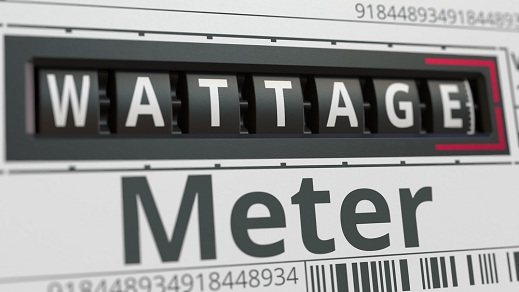
This is pretty easy to understand. By definition, wattage is a way to measure the amount of power required for an electrical appliance or device to operate.
Therefore, wattage amounts on an electrical device indicate how many Watts it consumes when used.
Using less power means using less wattage.
So, in turn, you want a unit that will offer the best amount of BTU while using the least amount of wattage.
How To Calculate EER
Once you understand the terms, it’s time to learn how to figure out EER. It’s simple!
The energy efficiency rating of a portable air conditioner is its BTU rating divided by the wattage consumed.
For example, if a 12,000-BTU portable air conditioner uses 1400 watts, its EER rating would be 8.4 (12,000 BTU/1440 watts).
How To Use EER When Buying a Portable AC
Higher EER ratings mean that the unit will be more energy efficient.
EER ratings are listed on all applicable products under the Energy Guide label.
What Is a Good EER Rating For a Portable AC Unit?
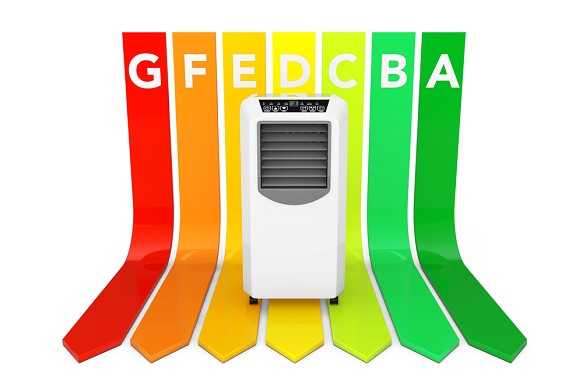
Portable air conditioners are typically rated with an EER of around 8.5.
If you buy one lower than this, you won’t save much money on electricity bills.
The best option is to go for a model with an EER of over 10.
Whynter Dual-Hoses is the most energy-efficient portable air conditioner we know of, with an EER of 11.2.
Why a Higher EER Portable Air Conditioner Is Better
With a portable air conditioning unit, you can target that specific room or area, cooling it to an ideal temperature while the rest of your house stays the same. As a result, you get a cooler house, a more comfortable home, and lower bills.
The lower electricity bill aspect is made even better using a unit with an even higher energy rating. The unit may cost you more at first than a model with a lower score, but you’ll save money over the long run.
A portable air conditioner can usually help your bills regardless of its rating, but the higher EER model will save even more.
How does EER relate to Energy Star?
The federal government has been working hard to increase energy efficiency within the United States since President Carter signed the National Energy Conservation Policy Act in 1977.
Under that act, the government began requiring manufacturers to meet certain standards for energy conservation.
Over the following few decades, the EPA worked closely with appliance manufacturers to develop programs to help consumers save energy.
In 1996, Congress passed the Energy Independence and Security Act, establishing the Energy Star program.
Energy Star is a voluntary labeling system that helps consumers identify products that consume less energy than similar items on the market today.
Products bearing the Energy Star logo must use at least 20% less energy than comparable models sold in 1997.
In addition to helping consumers make better buying decisions, Energy Star provides manufacturers feedback on how well their products perform compared to similar models.
Manufacturers receive points based on how much energy their product uses relative to the average.
They also earn points for meeting certain performance criteria, such as running longer without needing to be recharged.
The government calculates an industry’s average energy efficiency rating for current models, then compares each specific model to determine if it is more efficient than that baseline.
According to Energy Star’s own estimates, certified models are about 8 percent more energy efficient than conventional new models of the same type.
These estimates are continually updated as new models enter the market and efficiency continues to improve over time.
Consumers should generally expect their energy bills to be lower when they buy Energy Star appliances.
It’s important to note, however, that searching for the Energy Star label isn’t necessarily enough for total energy efficiency. Because the certification only shows which models are at least 8% better than the average, it doesn’t show which ones are worse. There may be a huge range between the best and worst options. This difference is where energy efficiency ratios come into play.
You’ll notice that the air conditioner has an EER listed somewhere among its features.
Note that two units with the exact same cooling capacity (for example, 5,000 Btu) might have different features, such as louvers that would cause the federal standard energy efficiency ratio to vary.
We will compare two air conditioners that both provide 5,000 BTUs of cooling.
Unit 1: This unit has louvered side panels, a federal standard EIR of 10, and a listing EIR of 11. That means that this product is 10 percent better than the average.
Unit 2: This unit does not have louvered sides; its federal standard EER is 9, and its listed EER is 10, giving it a rating of 11% better than the average.
If you compare the unit to the national standard, the second unit might look better than the first one.
Looking at the bigger view, however, shows that the first unit is by far the most efficient for cooling per watt.
This rating means you may need to dig deeper to figure out which one is right for you.
EER vs. SEER
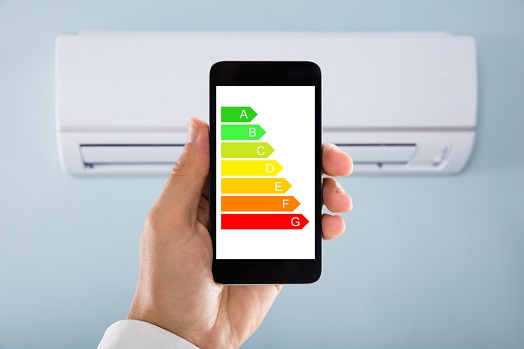
Both EER and SEER measure an air conditioner’s efficiency, but they concern themselves with two different kinds of temperatures:
EER measures an AC’s efficiency at its highest operating point, typically between 90°F and 100°F.
SEER (Seasonal Energy Efficient Ratio) measures an air conditioner’s efficiency throughout an entire cooling period, ranging from 64°F to 105°F.
SEER is an average AC efficiency rating; EER is just one data point.
EER doesn’t consider certain factors, so it might not be appropriate for every homeowner.
SEER is more broadly applicable and is often more useful than EER for a broader range of AC owners.
Conclusion
Americans spent over $11 billion last year cooling their homes. Yet, of those people, only about two-thirds had air conditioners.
If you’re concerned about being environmentally friendly or saving on your utility bill, you should always look for appliances and devices that are the most energy efficient.
Reducing the load of your local power grid is good for the environment and can add up over time effectively.
Central heating and air systems are more energy efficient than window units, but they can still cost you money if they’re constantly running to keep the home warm.
Portable air conditioners can be a greener solution if you don’t use all your homes anymore.
Portable air conditioners can help cut energy bills by allowing you to cool different parts of your home at other times.
If you’re serious about trying to cut down on your air conditioning bill, then the energy efficiency rating for your portable AC unit is essential.
I’m a degreed ME (mechanical engineer) who is passionate about machines of all kinds. I created MachineWonders.com as a way to connect with others who love machines like me – or need help choosing one for their needs, application, or situation.



